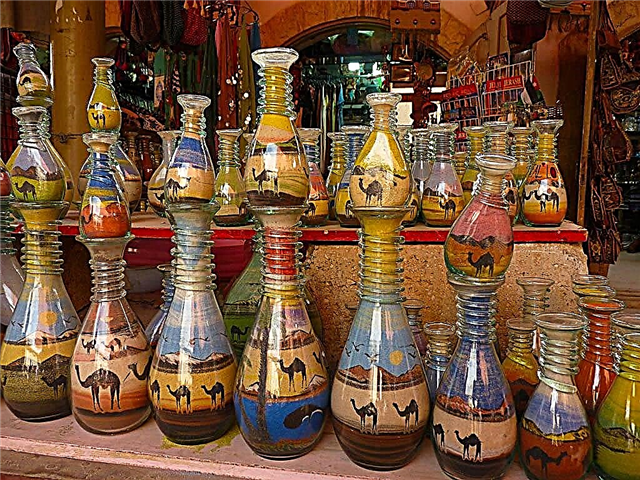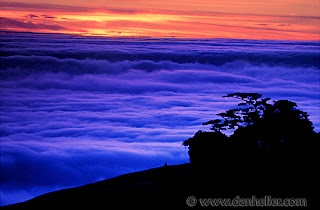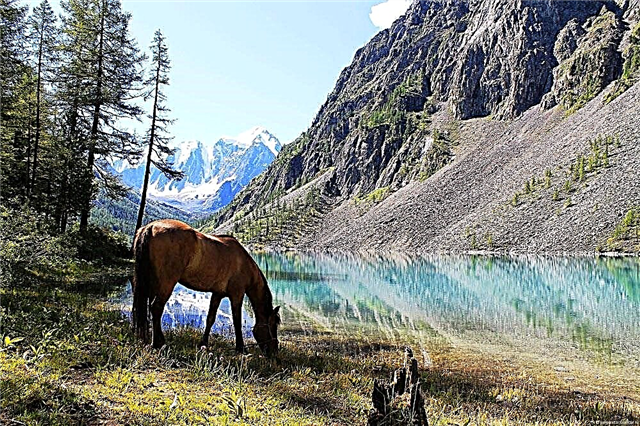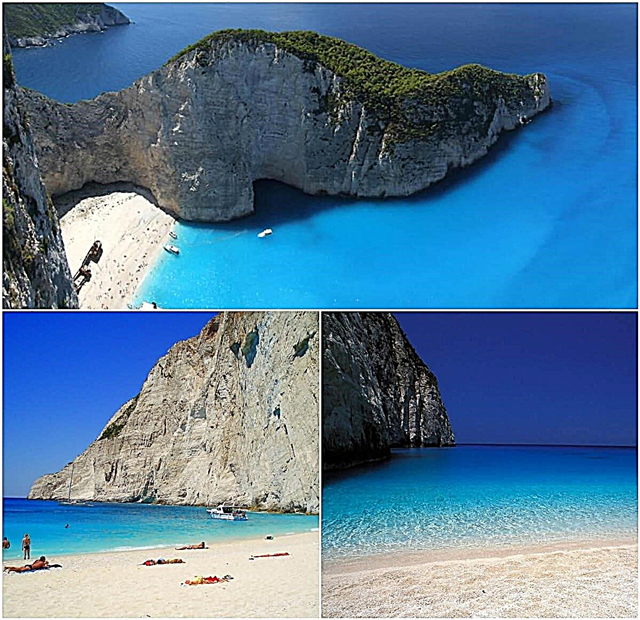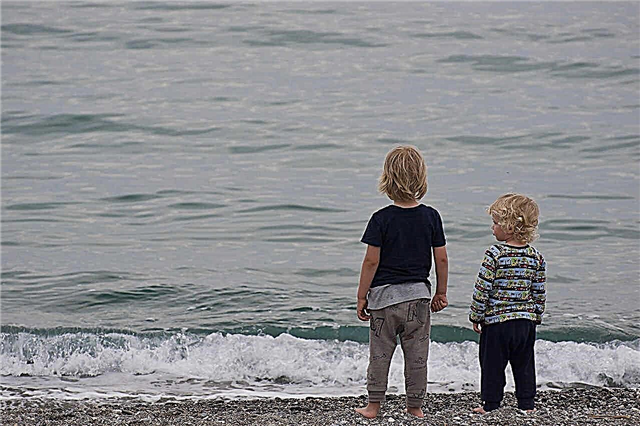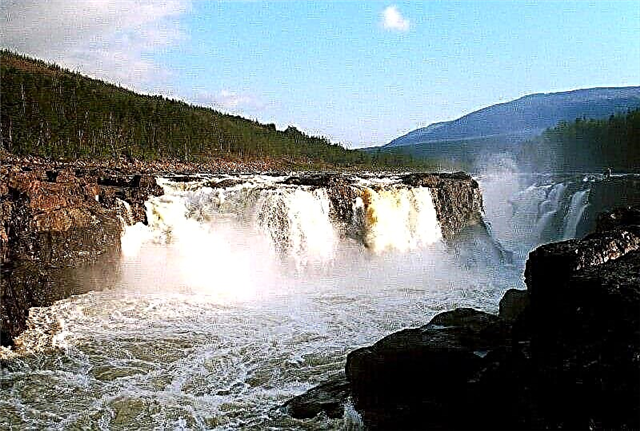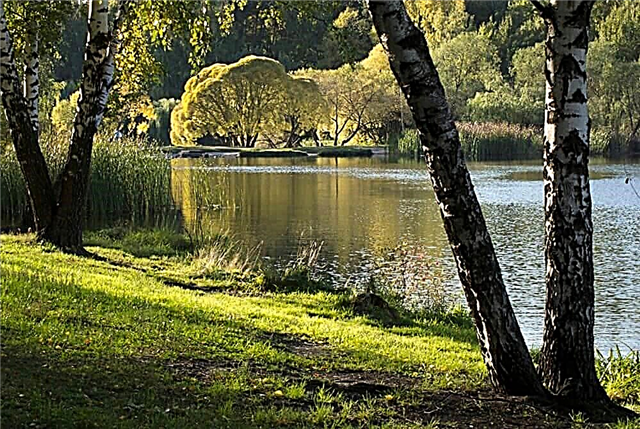Within Moscow, there are more than a hundred specially protected natural areas (PAs), where there is a special protection regime, and economic activity is partially limited. These are the "green laboratories" of the capital. The purpose of their protection is to preserve natural landscapes and vegetation, to help wild animals survive in a metropolis, and to reduce the negative human impact on nature.
The nature protection zones of the capital include the Losiny Ostrov national park, as well as natural and historical parks and landscape reserves, natural monuments and botanical gardens. These are territories of a special relationship between nature and man. Here you can relax, listen to birds, play sports. Life in such places flows according to the natural laws of nature. And we can only contemplate, explore, admire.
Nature reserves and national parks of Moscow
List of objects of regulated tourism. Protected places, photos with names and short descriptions!
Elk Island
One of the first national parks in Russia. Located in the north-east of the capital. The area is almost 12 thousand hectares, a third of the territory is within the boundaries of Moscow. Former royal hunting grounds. 80% are occupied by forests. There are many reservoirs in the park - several rivers, ponds, a bog complex. Of the sights - the Alekseevsky Palace, the Museum of Russian Hunting on the territory of the former Menshikov estate, groups of mounds along the river banks, the museum expositions "Russian Life" and "Tea-drinking in Mytishchi". The park has several horse farms and an elk biological station. About 10 ecological routes have been developed. There is an ecological center for children.

Natural and historical parks
The best recreational areas in the city, beautiful places for relaxation and walks in nature!
Tushinsky
It encircles the residential area of Tushino. Consists of several sites - the Bratsevo estate complex with a park, Tushinskaya chalice, Bratsevsky and Zakharkovsky gardens, Aleshkinsky forest, etc. Valuable finds were found during excavations on the territory - sites of ancient people of the Neolithic era, fragments of dishes and tools, as well as settlements and burial mounds group of Vyatichi. There are excursions in the park, eco-trails have been created, there are children's and sports zones. In winter, ski runs are laid.

Pokrovskoe-Streshnevo
Located in the northwest of the capital. The park includes a manor complex with a church and greenhouses, a forest park zone, a cascade of several ponds with a picturesque meadow park. There are several natural monuments, including a spring and one of the fragments of the Khimki river valley. Famous inhabitants of the park are the family of beavers who built a hut and a dam on Khimka. Several playgrounds have been built for children, there is a sports alley with exercise equipment and picnic spots.

Ostankino
Located in the northeastern part of the capital. At the heart of the park is a 200-year-old oak forest, there are also fragments of a pine and birch grove, a network of large and small ponds. On the territory there is a palace and park complex - the Ostankino estate museum, the botanical garden of the Academy of Sciences, the Dikul rehabilitation center, the All-Russian exhibition center, the equestrian center, the museum of cosmonautics. The park also has an area for children's attractions, a sports area, and a paintball club.

Izmailovo
Located in the east of the capital, on the site of the former royal estate. There are many reservoirs - 2 rivers, streams, 13 ponds, swamps, one of which is declared a natural monument. Also among the natural monuments are 160-year-old lindens, 120-year-old larches, 90-year-old alder. The territory is equipped with picnic areas, an equestrian sports center and an eco-center "Tsarskaya Apiary". In winter, a skating rink is open, and there are trails for skiers. There is a children's amusement area.

Tsaritsyno
Located in the southeast of the capital. It is famous for its picturesque natural landscapes, the architectural palace complex of Tsaritsino, a landscape park, the largest ponds in Moscow, archeological monuments dating from the X-XIII centuries. A rich collection of plants from different countries is presented in the Biryulevsky arboretum; the cherry blossom alley is of particular interest. The park has several children's, sports and picnic areas, sports equipment rental.

Bitsevsky forest
Located in the south of the capital. The area is 1.8 thousand hectares. It was created on the basis of a forest park. It has 13 sites declared as natural monuments - spruce forests, springs, etc. The park includes 3 old estates with functioning temples. Other facilities include a large equestrian sports complex, a museum of paleontology, a cynological center, the Institute for Nature Conservation, a sanatorium, and a ski school. The Ecological Center conducts educational excursions in the park.

Moskvoretsky
It is located in the west of the capital in the Moskva River valley. Large bodies of water and meadows are dominated by oak forests, coniferous plantations, and birch groves. There are 60 species of the Red Data Book animals, many birds, especially black-headed gulls. A large number of playgrounds and sports grounds, there is a rowing canal, a ski center, golf courses, an ice rink, tennis courts. The park includes two manor complexes - Fili-Pokrovskoe, Kuntsevo, as well as the ancient Kuntsevo settlement.

Kosinsky
Located in the Eastern District of Moscow. The main natural resources are three large lakes of natural origin, the only ones in Moscow, as well as a whole network of swamps, several ponds and springs with characteristic vegetation. There are beaches, walking and cycling paths around the lakes. Several picnic areas have been created. Among the historical sights there are three ancient temples, burial mounds of the ancient Slavs.

Sokolniki
Located in the north-east of the capital, on the site of the old forest lands for royal hunting. It has a children's and sports area, as well as a zone of entertainment events with several stages, a theater, numerous exhibition pavilions, a reading room, and a palace for children's creativity. The staff of the Sokolniki Museum conduct sightseeing and theatrical tours of the park, historical quests. The museums of pinball and calligraphy, lilac and astronomical gardens are worthy of attention.

Kuzminki-Lyublino
Occupies an area of over 1 thousand hectares in the southeast of the capital. Most of the territory is covered with young forest plantations, but areas with 200-year-old trees have also survived. The park includes two manor complexes; many buildings of the 18th-19th centuries have been preserved and restored. Among the interesting objects - a museum of vintage cars, a museum of manor culture, a beekeeping center, a corner of domestic animals, the estate of Santa Claus, etc. Routes of several eco-trails have been developed.

Nature reserves
Landscape, biological and zoological, hydrological and other territories intended for the protection (restoration) of rare species and acquaintance with them.
Sparrow Hills
It is located on the right steep bank of the Moskva River. Area - 135 hectares. Due to landslide processes, this territory has passed intensive development, and the original natural appearance has been preserved. There are 3 eco-trails with benches, gazebos, information boards. Guided tours, sporting events and environmental events are organized. There are several historical and cultural monuments - St. Andrew's Monastery, a 15th century temple, a stele dedicated to Herzen and Ogarev.

Valley of the Setun River
The largest reserve is located in the west of the capital, along the banks of one of the tributaries of the Moskva River. To get acquainted with the flora and fauna of the reserve, ecological excursions are organized. Equipped with barbecue areas, playgrounds. Archaeological sites include the remains of the pre-Mongolian Matveyevskoye settlement and the Davydkovsky burial ground.Also on the territory are the Troekurovskaya estate, 4 churches of the 17th century, the estate parks Spasskoye and Trinity-Golenishchevo.

Deguninsky
Located in the north of the capital, it has an area of 8.4 hectares. Received the specially protected status in 2010. Due to the numerous oaks growing on the territory, it is also called Northern Oaks. All conditions have been created for a quiet and active family holiday - several playgrounds and sports grounds, including for people with disabilities, many benches, a whole network of paths and winding paths has been laid for walks. An outdoor ice rink is open during winter.

Petrovsko-Razumovskoe
Located in the northwest of the capital. Includes forest, meadow, water areas and an architectural and park ensemble. A regular park, sculptures, a cascade of ponds with islands, an alley with 200-year-old linden trees remained from the Razumovsky estate. There is a Forest Experimental Dacha, Schroeder Arboretum, and a horse breeding museum. The monuments of architecture include the remains of a medieval settlement and an ancient burial ground. A popular recreation area is Dubki Park.

Teply Stan
It is located on the Teplostan Upland. The Ochakovka river flows through the territory, a large pond has been created, and the Troparevo recreation area has been equipped. The ponds are surrounded by birch groves and old oak forests. There are several historical monuments - ancient burials of the Slavs in the form of barrows, a church, a chapel of St. Sergius of Radonezh. An excursion route has been developed along the arboretum and apothecary garden, as well as dedicated to the landscape of the reserve, Ochakovka and its tributaries.

Troparevsky
Ennobled forest area in the south-west of Moscow. On its territory there are children's playgrounds, sports grounds, picnic areas with gazebos and places for barbecues, an Apothecary garden with a wide variety of medicinal plants, an eco-trail, an aviary complex for birds. In summer there is a beach near the pond, in winter there is a ski track and an ice rink. Educational excursions, games and sports programs are held for children, and a fairy forest school is open in summer.

Valley of the Skhodnya River in the Molzhaninovsky District
Located in the Northern District of the capital. The preserve was established in 2007. The area is 11.6 hectares. Habitat of more than 70 species of vertebrates. Among them are the common frog, lapwing, black-headed gulls, which are quite rare for Moscow. The vegetation of the Skhodnya coast has retained its original appearance; some of the Red Book plants are found here - marsh cinquefoil, indistinct lungwort, dense corydalis, spreading bell.

Valley of the Skhodnya River in Kurkino
Located in the northwest of the capital. Area - 245.5 hectares. Nature - valuable natural meadows, bogs, mixed forests. Among the plants is the largest population of orchids in Moscow. For vacationers, picnic areas with furniture, barbecues, awnings are equipped. For hikers, there are eco-trails with observation platforms and benches. There is a playground for children. Excursions are organized - sightseeing, historical, botanical, etc. In winter, a ski track and a skating rink work.

Natural Monuments
The most beautiful, irreplaceable and unique, aesthetically valuable complexes and objects.
Serebryany Bor
Forest area of 329 hectares in the north-west of Moscow. Located on an artificial island. Pines predominate, but there are also broad-leaved species. There are many reservoirs - Bottomless Lake, reed bogs, Kopan pond. Two beaches are equipped. There are aviaries for birds of prey, cranes and herons, muskrats, otters. To get acquainted with the flora and fauna of Serebryany Bor, two eco-trails have been created. Musical evenings are organized in the open air - at Lemeshevskaya Polyana.

Floodplain of the Moscow River under the Church of St. John the Baptist in Kolomenskoye
It is located within the Kolomna Museum-Reserve. The protected area consists of a section of the old river bed - the oxbow and floodplain meadows with characteristic vegetation. In this area, the pristine soil and vegetation cover has been preserved, which is of particular value. Built on the steep bank of the river, the Church of St. John the Baptist is a magnificent example of Russian temple architecture from the 16th century and is one of the oldest in Moscow.

Molzhaninovskoe raised bog
Located in the north of the capital. Area - 1.2 hectares. Deprived of underground food, formed by water from atmospheric precipitation. One of the three preserved raised bogs in Moscow. The ecosystem is different from lowland swamps. The vegetation is represented by birches, willow, lyre, wild rosemary, sphagnum moss, and cranberries. Among the birds are the long-eared owl, the wagtail, the crested duke, etc. The animals are mainly amphibians, as well as the Red Book hare. Themed excursions are organized.

Reserves planned for creation
The most interesting and promising territories in terms of obtaining the status of protected areas
Altufevsky
It is located in the north-east of Moscow, on the site of the former estate estate Altufyevo. A church and a park with oak, linden and poplar plantations have been preserved since the 18th century. The basis of the reserve is a forest area mainly of birch and pine forests. There is a picturesque cascade of ponds where many species of birds nest, including the rare cinder. The infrastructure is well developed - recreation areas, playgrounds for sports, children's games, picnics are equipped.

Lianozovsky
The territory of the future reserve used to be part of the Altufyevo estate. Has an area of about 100 hectares. An old oak grove has been preserved here, individual trees are more than 150 years old. There is a cascade of ponds, streams, swamps, including a horse-riding one - very valuable for Moscow, with unique vegetation. The forest park has a developed path network, there are playgrounds, special areas for picnics. In winter, the skating rink is flooded, actions are held in support of wild forest inhabitants.

Medvedkovsky
Small forest area of 21 hectares. It is of great value for Severnoye Medvedkovo, where it is located, since there are no other forests here. It owes its name to the former owner of the land - Prince Pozharsky, popularly nicknamed "The Bear". The basis of natural resources is a birch grove with fragments of an aspen forest. In recent years, the park has been noticeably ennobled - they have equipped playgrounds for children, picnic areas, put in order a network of paths, put benches.

Northern
Located in the north-east of the capital. The territory of the future reserve consists of two large tracts of mixed forests, separated by cottage settlements. The area is 95 hectares. It is closely adjacent to the forests near Moscow, so large animals, such as moose, can sometimes freely enter the territory of the reserve. Work is underway to improve the area - paths for pedestrians are put in order, recreation areas are equipped, playgrounds for children.

Long ponds
Located in the North-Eastern District. Area - 80 hectares. The main value of the reserve is two elongated ponds with an area of 14 hectares. Large areas are covered with low-lying bogs. Black-headed gulls nest in the coastal thickets, one of the largest colonies in Moscow. It is also inhabited by the common kutora, which is rare for the capital. Historical monuments include the estate of Vinogradovo and Zabolotye with fragments of preserved parks, as well as several mounds on the river bank.

Dendrological parks and botanical gardens
The main places for the creation of special collections of plants and the implementation of scientific and educational activities!
Main Botanical Garden named after N.V. Tsitsin
One of the largest in Europe. It is located on the territory of the Ostankino forest park. Plants from all over the world, different climatic zones, including water ones, are presented on specially created reservoirs. Among the most interesting sights are the garden of continuous flowering, the Japanese and the Shadow gardens, and the rose garden. In the greenhouse of the garden, 6 thousand species of exotic plants are grown, among them - a collection of bonsai trees and orchids, the largest in the country.

Botanical Garden VILAR
Belongs to the Institute of Medicinal Plants. Located on the site of a manor that belonged to the Ferreins pharmacists, in Northern Butovo. Plants are grown in various geographic regions of Russia and other countries. There are several greenhouses, a plot with medicinal plants. Several artificial ponds have been created, which are well known to fishing enthusiasts. All equipment can be rented. Fishing is paid here. There are gazebos on the shore.

Botanical Garden named after S. I. Rostovtsev
Located on the territory of the Timiryazev Agricultural Academy. Belongs to the "Petrovsko-Razumovsky" reserve. It was founded at the end of the 19th century by the botanist Semyon Rostovtsev. Excursions offer acquaintance with a unique collection of tropical, aquatic and semi-aquatic, alpine, steppe plant species. You can buy the items you like. On the basis of the botanical garden, scientific work is being carried out on the study, cultivation, reproduction of ornamental plants.


